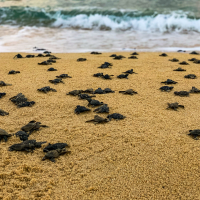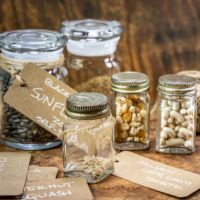5th June 2024
Fruiting and Dispersal
Today we are investigating the processes of fruiting and dispersal. Fruits are the mature ovaries of flowering plants and play an essential role in their life cycle by protecting seeds and aiding in their dispersal. Through various adaptations, fruits ensure that seeds are spread over a wide area, increasing the chances of successful germination and growth of the next generation of plants.
More broadly today, we can think about fruiting and dispersal not just in association with flowering plants. Mushrooms are the fruiting bodies of fungi that are mostly hidden below the soil. Animals will disperse away from their parents after they mature.
Let’s play with these different ideas in our nature journals!
Journal Together session
*You can use a timezone converter to check the event time in your area.
5th June, 4pm Pacific time; 6th June 9am Brisbane Australia.
Kate Rutter will lead a Journal Together session on the theme of fruiting and dispersal.
Nature journaling prompts and ideas
Many of the foods we eat every day are the fruits of flowering plants. This gives us a wonderful opportunity to study fruits up close. Find something from your refrigerator or fruit bowl that you would like to investigate, such as an apple or a tomato. Cut the fruit in half and sketch the cross-section in your nature journal. What do you notice? What kind of seeds does it have? How does this fruit help the plant disperse its seeds?
There are a huge variety of interesting ways that seeds disperse from their parent plants. Some seeds have evolved ‘wings’ and are moved on the wind; some are encased in ripe fruits which are eaten by animals and moved to new places; some burst from their pods in a process called explosive dispersal; some have developed methods of sticking to fur or skin to be transported that way. This article shares several interesting ways that seeds can be dispersed. What do you notice about seed dispersal in your nearby nature? Can you identify a range of ways that seeds might be moved across the landscape? Capture these observations in your nature journal.
Phenology is the study of seasonal and cyclic patterns in nature. We can observe patterns in the timing of plant fruiting and how these fruits influence the presence of other organisms. You might notice that as certain trees bear seasonal fruit, it attracts birds, bats or other animals. Observe and document seasonal fruiting patterns of nearby plants, noting which wildlife species are attracted to the area during different times of the year.
Animals will also disperse from their parents to live their lives in a new territory. Animals dispersing from their parents is a crucial phase in their life cycle, promoting genetic diversity and reducing competition for resources. This process often occurs when young animals reach a certain level of maturity, prompting them to leave their birthplace in search of new territories. This video shows the world’s largest hatching and dispersal of baby turtles. Pay attention to the animals that you notice around you. Where do they go after they start their lives? Do they disperse far from their parents or do they stay close? Write about these behaviours in your nature journal.
Ripening is the process by which fruits become mature and ready to disperse their seeds. During ripening, changes in texture, colour, scent, softness and taste of the fruit can often be observed. Choose a fruit-bearing plant and observe the process of the fruit ripening. Record changes in colour, texture, and taste, as well as the time it takes for fruits to ripen fully.
Much of the diversity of cultivated fruits and vegetables has been lost in recent years because of agricultural practices that favour uniformity and high yields. In many parts of the world, organisations are working hard to protect the genetic diversity through seed banks. Learn more about seed banks in this article. We can play a positive role in the dispersal of seeds by learning about and choosing heirloom varieties for our gardens as well as saving and sharing seeds with friends and local seed saving networks. In your nature journal, research the story, origin and cultural significance of a specific heirloom seed variety that interests you. Perhaps you could even grow this plant at home and save the seeds (this article shows you how). By supporting seed banks, community gardens, and sustainable farming practices, we can work towards safeguarding and reviving the rich heritage of our agricultural biodiversity.







